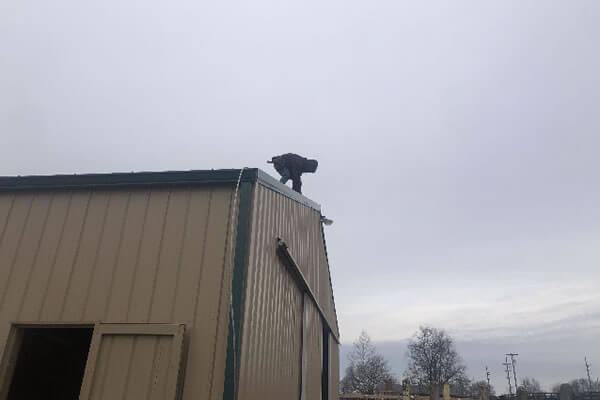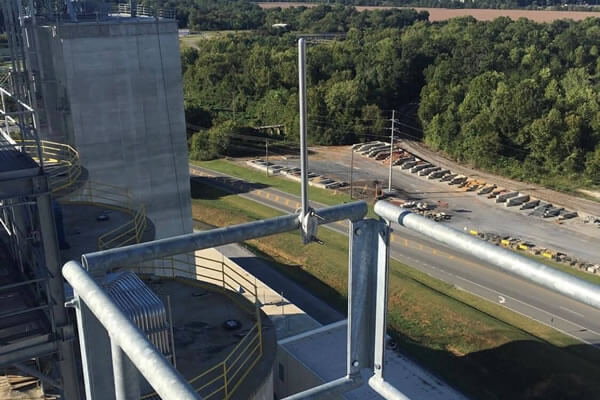Today, many buildings in Florida, particularly those in areas prone to frequent thunderstorms and lightning activity, are equipped with lightning protection systems. Lightning protection systems are designed to minimize the risk of damage caused by lightning strikes by providing a safe path for the electrical discharge to follow, directing it to the ground.
Evolution of Lightning Protection Systems
The history of lightning protection systems is quite fascinating, spanning centuries of human efforts to mitigate the destructive effects of lightning strikes. Here is a brief overview of the evolution of lightning protection systems:
- Benjamin Franklin’s Experiments (18th Century):
- The history of lightning protection is often traced back to Benjamin Franklin’s famous kite experiment in 1752. Franklin flew a kite with a metal key attached to it during a thunderstorm, demonstrating the electrical nature of lightning. This laid the groundwork for future developments in lightning protection.
- Lightning Rods (18th Century):
- Inspired by Franklin’s discoveries, lightning rods were developed as a practical means of protecting structures. The lightning rod, essentially a metal rod mounted on a building, was designed to attract lightning and conduct its electrical charge safely to the ground, preventing damage to the structure.
- Development of Standards (19th Century):
- In the 19th century, as the use of lightning rods became more widespread, various standards and guidelines for their installation were developed. Organizations and experts started providing recommendations for the proper design and installation of lightning protection systems.
- Introduction of Grounding (19th Century):
- It was recognized that effective grounding was crucial for the proper functioning of lightning protection systems. The installation of grounding systems became a standard practice, ensuring that the lightning energy could be safely dissipated into the ground.
- Early Advances in Materials (20th Century):
- Advances in materials science led to improvements in lightning rod design. Copper and aluminum became popular choices due to their excellent conductivity and resistance to corrosion. Systematic studies were conducted to better understand lightning behavior.
- National Lightning Protection Standards (20th Century):
- National standards for lightning protection were established in many countries during the 20th century. These standards provided comprehensive guidelines for the installation of lightning protection systems in various types of structures, including residential, commercial, and industrial buildings.
- Integration with Modern Building Practices (20th Century):
- Lightning protection systems became an integral part of modern building practices, especially in regions prone to thunderstorms. Architects and engineers started designing structures with lightning protection in mind, incorporating rods and conductors into the overall building design.
- Technological Advances (21st Century):
- The 21st century has seen continued advancements in lightning protection technology. Improved materials, monitoring systems, and grounding techniques contribute to more effective protection against lightning strikes. Lightning detection networks and early warning systems have also been developed to enhance safety.
- International Collaboration (21st Century):
- As lightning does not respect geographical borders, there has been increased international collaboration in the development of lightning protection standards and technologies. Organizations like the International Electrotechnical Commission (IEC) play a role in establishing global guidelines.
Today, lightning protection systems are an established and essential component of building safety, offering reliable protection against the destructive forces of lightning strikes.

Coastal Lightning Rods of Florida, provides a full range of lightning protection services including:
- Risk Assessment – We perform a risk assessments before we install the lightning protection system.
- Lightning Protection System Design – Each property is unique and has a different size and shape. We design a lightning protection system that meets all standards.
- Lightning Protection System Installation – We install the designed lightning protection system and make sure it complies to all standards and codes of practice.
- Lightning Rod Installation – Lightning rods are usually placed at the highest points of a building or structure to maximize their effectiveness in attracting lightning strikes. This could include roof peaks, chimneys, or tall masts.
- Grounding – Along with lightning rods, a grounding system consisting of grounding rods buried deep into the ground is essential. This system provides a safe path for the electrical current from a lightning strike to dissipate harmlessly into the earth.
- Retrofit Existing Lightning Protection System: Retrofitting an existing lightning protection system involves making modifications or additions to enhance its effectiveness or meet updated safety standards.
- Tests & Inspections of Lightning Protection Systems – We offer Annual testing of existing lightning protection systems.
- Lightning Protection System Maintenance & Repair – Over time your lightning protection system may damage. We provide repair service in the event of damage.
Coastal Lightning Rods is a leader at providing lightning protection system throughout the state of Florida, entire South East, Gulf Coast and Atlantic Coast. We also provide lightning protection in Alabama, Georgia, South Carolina, Louisiana, Florida, Mississippi, Tennessee and beyond. Our certified engineers design, install and maintain lightning protection systems. Contact us today. All estimates are free. Our rates are competitive. Please call us at 321-432-2179 to consult with us.

